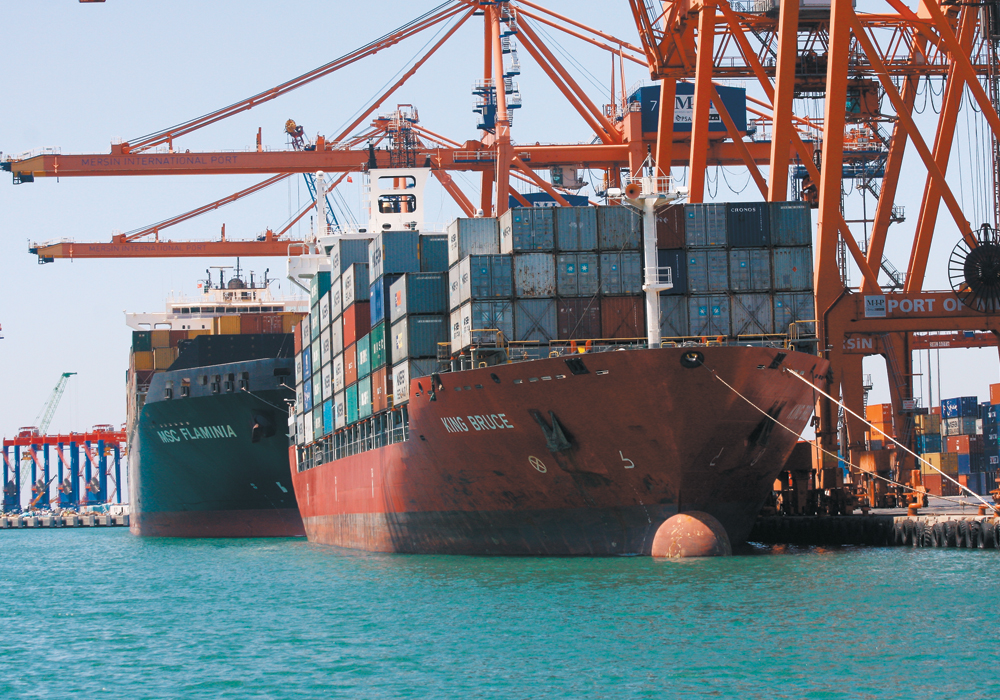COVID-19 is having a profound impact on containerized shipments of Canadian agricultural products, say industry officials.
There have been 33 “blank sailings” from Asia to the Port of Vancouver since the beginning of January.
That is 33 container vessels that have been cancelled and 33 fewer ships sailing back to Asia loaded with Canadian products.
“The transloader yards right now are completely full of containers, probably double what you’d see under normal circumstances,” said Greg Cherewyk, president of Pulse Canada.
The “unprecedented” level of loaded containers sitting at ports is preventing transloaders from receiving any more rail cars and causing a backlog in containerized grain movement.
Read Also

Farming Smarter receives financial boost from Alberta government for potato research
Farming Smarter near Lethbridge got a boost to its research equipment, thanks to the Alberta government’s increase in funding for research associations.
“At this point, we’re looking at delays (of) five to six weeks for sure and from what I understand, we’ll be facing these kinds of challenges well into May,” he said.
About 15 percent of Canada’s pulse exports move by container.
Chris White, president of the Canadian Meat Council, said it is an issue for meat exporters as well.
“The challenge is lots of containers stuck at ports,” he said in an email.
“Hopefully (it) will loosen with China increasingly coming back on line.”
Mark Hemmes, president of Quorum Corporation, said the other problem is the lack of empty containers available for loading at inland elevator facilities.
Canadian agricultural exporters are completely reliant on inbound container traffic from Asia.
China ships containers full of what he called “Canadian Tire” goods to Canada such as electronics, clothing and furniture items. Many Canadian agricultural goods are shipped back to China as backhaul products.
COVID-19 has “trashed” the supply of inbound containers with 70 percent of the cancelled ships listing the disease as the reason behind the cancellation. A number of others are citing reduced demand as the reason, which is likely related to COVID-19.
“It has really hit the container business really hard,” said Hemmes.
Exporters were already facing a myriad of difficulties shipping grain this year. There where 41 vessels waiting to be loaded at the Port of Vancouver late last week and another 11 at Prince Rupert.
“We’re double what we normally are,” said Hemmes.
“There are contract penalties and demurrage costs that are just clocking like crazy right now.”
The one morsel of good news is that ocean freight rates have plummeted since the beginning of the year due to faltering demand.
The Baltic Dry Index has tumbled from a peak of over 2,500 in the fall of 2019 to slightly above 600 at the end of last week.
Hemmes prefers to follow Pacific Coast Panamex vessel spot rates, which fell from about $10,000 per day down to a low of about $2,600. They have since rebounded to about $6,200.
Ship owners contemplate idling their vessels when rates drop below $5,000. During the 2008 global economic meltdown there were ships moored in harbors all over the world.
Hemmes said low ocean freight rates will have a minimal impact on grain basis levels.
Quorum calculated that ocean freight made up about five percent of the $162 per tonne in total grain transportation costs in 2019. That is based on a Panamex rate of $7,800 per day.
Rail accounted for 33 percent of the cost and country elevation another 19 percent. The remainder was costs at destination and other factors.
Contact sean.pratt@producer.com


















